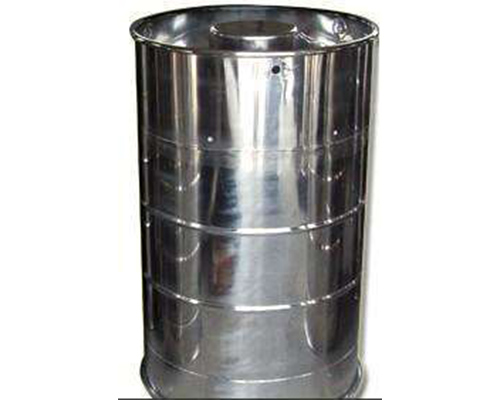
Yingkou Hengyang New Energy Chemical Co., Ltd.
Address: Xianren Island Energy and Chemical Zone, Yingkou City, Liaoning Province, via the west side of the Fourth Road
Zip code:115200
Telephone:18241754999
Fax:0417-6775999
E-mail:1313264@qq.com
Website:en.yingkouhengyang.com
Diethyl sulfate and carbonate, diethyl sulfate and carbonate can be transesterified to form diethyl carbonate and sulfate. The suitable carbonates are potassium carbonate and sodium carbonate. The equation of reaction between diethyl sulfate and sodium carbonate is as follows: this reaction can be carried out directly without catalyst, but its defect is the use of highly toxic diethyl sulfate. In case of leakage, serious environmental pollution will occur, and solid sodium sulfate will be produced, which is easy to scale the reactor. This method has been basically not used at present. The equation for the preparation of diethyl carbonate by the reaction of dimethyl carbonate with dimethyl ethanol and dimethyl carbonate with ethanol is as follows: This is a parallel series reaction, the reaction is carried out in the presence of a positioner, and the reaction is carried out in two steps. First, diethyl carbonate and ethanol are reversibly reacted to form methyl ether carbonate and methanol, methyl carbonate. Ethyl ester reacts reversibly with ethanol to form diethyl carbonate and methanol. Diethyl carbonate with 99% purity can be obtained by distillation of the reaction product. This method uses non-toxic raw material dimethyl carbonate, does not produce pollution, and the reaction conditions are mild. It can react under atmospheric pressure. The reaction temperature does not exceed 80 C, and the requirement for equipment is not high, so it is easy to realize in industry. The reaction is a series reversible reaction, and there will be selectivity. Without any special measures, dimethyl carbonate can not be completely converted to Diethyl carbonate, and a large part of it will be converted to methyl ethyl carbonate, thus wasting raw materials and energy consumption. Appropriate engineering measures can be taken, that is, by reversing the reaction. The problems mentioned above should be solved by distillation. Reactive distillation is the combination of reaction and distillation in the same equipment, and the reaction and distillation are carried out simultaneously. The methanol produced by distillation and evaporation reaction changes the equilibrium state of the reaction, making the reaction proceed in the direction of producing diethyl carbonate, and improving the conversion of reactants and the selectivity of products. Reactive distillation also has the advantages of shortening reaction time, strengthening equipment production capacity and saving energy. 3.2.3 The method of preparing diethyl carbonate by transesterification of propylene carbonate with propylene carbonate and ethanol to propylene carbonate is that propylene oxide is used as raw material, propylene oxide reacts with carbon dioxide to produce propylene carbonate, propylene carbonate reacts with ethanol to produce propylene glycol and diethyl carbonate. The reaction equation is as follows:
The essential raw materials for the synthesis of diethyl carbonate by transesterification of propylene carbonate with ethanol are carbon dioxide and ethanol. Propylene oxide is a carrier in the process and converts to propylene glycol at the same time. Because propylene glycol is mainly produced by the hydrolysis of propylene oxide, the essence of this process is the coupling of the synthesis of diethyl carbonate from carbon dioxide and ethanol (which can not be directly carried out in thermodynamic principle) and the hydrolysis of propylene oxide to propylene glycol. However, the second step is a reversible reaction, and the chemical equilibrium constant of the reaction is small. When the product is separated, the reverse reaction speed will be accelerated because of the decrease of ethanol concentration, thus the yield of the product will be reduced. 3.2.4 The method of preparing diethyl carbonate by transesterification of ethylene carbonate with ethanol and ethylene carbonate is similar to that of producing diethyl carbonate by energy exchange of propylene carbonate and ethanol, but the raw material is changed. The method uses ethylene oxide as the starting material, and ethylene oxide reacts with carbon dioxide to produce ethylene carbonate. Esters, vinyl carbonate and ethanol are transesterified to form ethylene glycol and diethyl carbonate. The reaction equation is as follows:
The synthesis of diethyl carbonate by transesterification of ethylene carbonate and ethanol also faces the problems of conversion and selectivity of reversible reactions and separation of products. Diethyl carbonate was synthesized by transesterification of propylene carbonate (vinyl carbonate) with ethanol using cheap and easily available propylene oxide (ethylene oxide) and carbon dioxide as raw materials, and by-product propylene glycol (ethylene glycol) was also produced. Moreover, the reverse reaction rate was easily accelerated during separation, so the selectivity of diethyl carbonate was not high. 3.3 Oxycarbonylation
The oxidative carbonylation of ethanol is the direct synthesis of diethyl carbonate from carbon monoxide, oxygen and ethanol. The reaction equation is as follows:
The reaction should be carried out under the action of catalyst. In general, palladium and other noble metal salts are loaded on activated carbon, A1203 and SiO2 as catalysts. The catalytic system can be homogeneous or heterogeneous. Under C0 partial pressure (9.8-19.6)*104Pa reaction temperature of 60-150 ~C, ethanol, carbon monoxide and oxygen react at high speed and high selectivity to produce diethyl carbonate by adjusting the gas composition in the reaction system to the explosion limit. This method has the characteristics of cheap raw materials, low toxicity, simple process and low cost, so it has a certain development prospects. At present, there are two methods, gas phase method and liquid phase method. However, this method uses precious metals as catalysts, and uses a large amount of them, so the cost is too high. Because of the existence of C0 combustion reaction, the selectivity of reaction is reduced, so inhibitors must be added to reduce the formation of C02. At the same time, raw gas C0 also has great toxicity, which should be paid attention to in the operation process. These are shortcomings.
